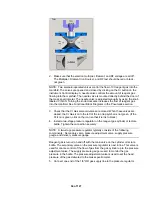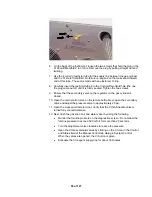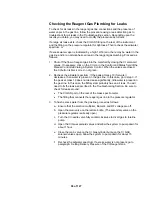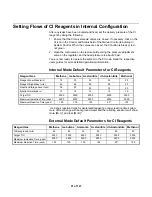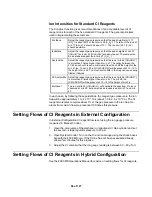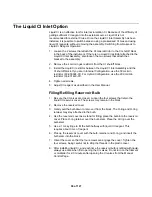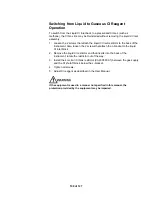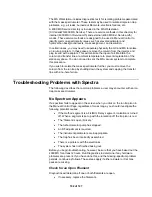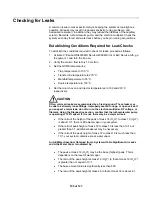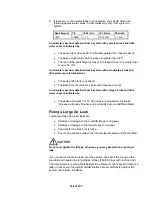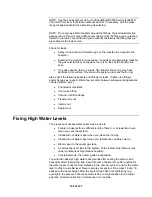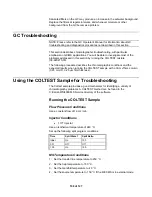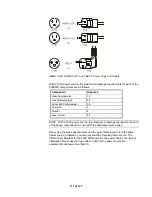
Fixing a Small-To-Moderate Air Leak
You may have more trouble finding and correcting a small-to-moderate air leak
than a large one. Symptoms associated with small-to-moderate air leaks include
the following:
•
The peak at mass 28 will have increased, becoming significantly larger
than the mass 18 peak.
•
The air leak will probably increase the water background, particularly in
humid environments. An increase in water vapor content will likely be
accompanied by a 20% or greater increase in the 19:18 intensity ratio.
Checking GC Connections
NOTE: Check the GC Maintenance Section for additional information for trouble
shooting leaks.
To identify and correct a leak at the connections between the capillary column
and the injector or transfer line, proceed as follows:
•
Make sure that you are using ferrules of the correct size, i.e., 0.4 mm for
0.25-mm ID columns, and 0.5 mm for 0.32-mm ID columns.
•
Make sure that the ferrule on the transfer line is a graphite/Vespel
mixture. Most transfer line connection leaks occur on the high vacuum
side (e.g., around the transfer line O-ring).
In the case of a graphite/Vespel ferrule, tighten each ferrule one-half turn beyond
finger tightness. In the case of a graphite ferrule, tighten each ferrule three-
quarters of a turn beyond finger tight.
•
Leaks at the septum may arise from loose injector nuts or overuse of the
septum. Regularly change the septum as part of your routine GC
preventive maintenance program. To reduce the level of air bleeding into
the system and any background from the septum material, use good
quality, low bleed septa.
•
Air leaks in the GC pneumatics are the most difficult leaks to detect and
eliminate because detection gases are not particularly effective for this
purpose. In general, you should tighten all fittings.
•
Saturated filters on the GC may produce an increase in the air/water
background. Replace the filters at regular intervals and whenever
moisture or other background from the GC becomes a problem.
Troubleshooting Air Leaks Using Leak Detection Gas
You may use a leak detection gas such as difluoroethane to locate leaks. For
example, difluoroethane is sold commercially under the name Dust-Off. A leak at
the transfer line (the high vacuum side) should produce an immediate response.
If, on the other hand, the leak is coming from the GC injector, it will take about 90
sec to register a response. (It takes about that length of time for the gas
molecules to travel through the capillary column.) If you discover a leak at the
injector, you can correct the problem without venting the system; however, be
sure to wait until all GC zones are cool before beginning. If the leak is coming
from a transfer line O-ring seal, you will have to shutdown the GC/MS system
and vent the system before fixing it.
107 of 127
Summary of Contents for 4000 GC
Page 4: ......
Page 40: ...6 of 127...
Page 77: ...3 Check source connection pins for proper alignment and straighten as necessary 43 of 127...
Page 124: ...90 of 127...
Page 148: ...114 of 127...


